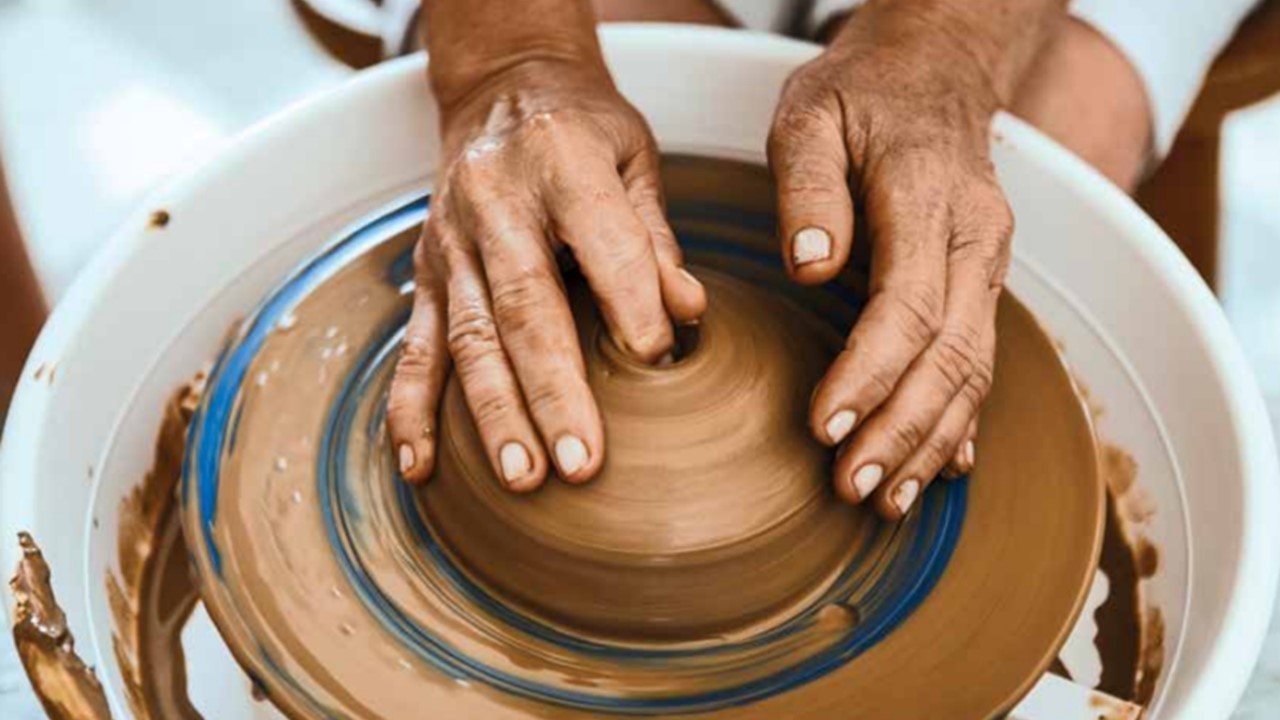
Museums that offer creative aging programs can help their communities embrace happiness and combat ageism, creating a better quality of life for everyone.
“In the long process of aging, your personal process of daily discovery is ongoing. You continue to learn more and more about yourself every day.”
Kung Fu master Bruce Lee was famous for his powerful punches and kicks. Less known, but perhaps more important, was his underlying philosophy of life. To Lee, martial arts were a pragmatic endeavor: a set of exercises to build physical strength and skill. But Lee’s quest was also spiritual. He believed in the Tao, a path we can all take toward harmony with the flows of nature and within ourselves. Embracing this journey will lead to a person’s most important achievement: happiness. At the same time, Lee’s teachings emphasized the importance of fending off the negative forces that impede our pursuit of joyfulness.
These same ideas can be found in the creative aging movement. On the one hand, creative aging is a pragmatic endeavor. Its programs seek to serve a rapidly growing demographic. AAM and Aroha’s Seeding Vitality Arts in Museums initiative provides a useful road map and set of resources to get started. To fully understand the power of creative aging, however, it is important to look at its larger philosophical aims: 1) cultivating happiness; and 2) fending off the ageism that can undermine this goal.
By considering these ideas more closely, museums have an opportunity to realign themselves with the flows of nature, creating a better quality of life not just for our elders, but for all of us.
Happiness vs. Ageism
Like the Tao, happiness cannot be defined. This hasn’t prevented researchers from trying. Psychologists and scientists have pinpointed the behaviors most linked to attaining joyfulness. A deep form of happiness occurs, they say, when people maintain strong social networks, give back to others, and challenge their bodies or minds beyond their comfort zones. That is why creative aging programs emphasize socializing, volunteering, and developing a rigorous artistic practice. Even though this sounds serious, having fun is also part of the equation.
Few would dispute that happiness is good for the soul. As it turns out, it is also good for our physical health. Using quantitative tools, longitudinal studies, and brain scans, scientists have confirmed that positive emotions strengthen brain neuroplasticity and improve memory recall. Happiness decreases anxiety and other mental health afflictions. It boosts immunity. Happy people heal more quickly from illnesses. They are more productive in the workplace. They cope better with the inevitable losses and physical deterioration that come with elderhood. Older people who describe themselves as happy outlive those with negative attitudes about the aging process by an average of seven and a half years.
There’s more good news. Studies confirm what many elders have already intuited: our ability to achieve happiness increases as we approach elderhood. Since we are more experienced at life, we know what and who to avoid. We devote our time to activities that are most meaningful to us. We cultivate positive relationships. These behaviors, which creative aging programs seek to nurture, have been shown to augment happiness. Yet an insidious force works against older people’s increased capacity for joyfulness: ageism.
Ageism is so prevalent in society that the World Health Organization has declared it a public health crisis. Ageist behaviors like ignoring, distrusting, diminishing, or talking down to older people or restricting their access to healthful activities diminishes their self-esteem. This leads to social isolation, loneliness, depression, and other mental health issues. According to a National Institutes of Health study, people and institutional settings that “activate” age stereotypes for older adults trigger brain changes related to dementia.
What Museums Can Do
Just as the martial arts call on practitioners to combat the negative forces that block their paths, creative aging advocates understand the urgency of unblocking society’s biases toward older people. The more paths institutions like museums can open for older people to fulfill their potential and give back to society, the better life will be for them and their families. Happier, healthier, more engaged older adults will place fewer burdens on the health care system and increase workplace productivity. We need to see promoting deep happiness and combating the ageism that impedes it as a social good.
“Offering high-quality programs that are affordable and accessible to older adults is a pragmatic application of creative aging that meets an immediate societal need. ”
Offering high-quality programs that are affordable and accessible to older adults is a pragmatic application of creative aging that meets an immediate societal need. Creating meaningful volunteer opportunities and improving the accessibility of physical and virtual spaces are other practical steps that museums can take to support elders.
Museums should also combat ageism by incorporating anti-ageist awareness within current diversity, equity, accessibility, and inclusion (DEAI) initiatives. This includes constructive intergenerational dialogues about racism, social equity, and other injustices that are deeply embedded within the museum field. Unless people of all ages can work together with empathy and mutual respect, ageism will persist into future generations.
Creative aging’s emphasis on meaningful social relationships, altruism, and rigorous engagement with challenging practices can benefit people of all ages. But it goes beyond individuals. Being anti-ageist and pro-happiness is a powerful one-two punch that can help museums create more harmony within themselves and their communities.
Resources
AAM’s Museums and Creative Aging aam-us.org/programs/museums-creative-aging/
Aroha Philanthropies’ Vitality Arts programs arohaphilanthropies.org/vitality-arts/
Stanford Center for Longevity longevity.stanford.edu
Louise Aronson, Elderhood: Redefining Aging, Transforming Medicine, Reimagining Life, 2019
Mihaly Csikszentmihalyi, Flow: The Psychology of Optimal Experience, 2008
Ashton Appelwhite, This Chair Rocks: A Manifesto Against Ageism, 2019








